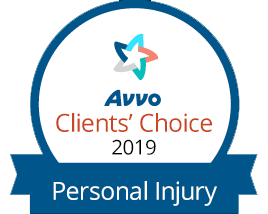How Drug Laws May Be Tackling A Rising Epidemic
Anyone who manages their chronic pain through the use of prescription medication has likely noticed the swift changes enacted at their local pharmacies. Once requiring only a name and birthdate to be picked up, several prescription drugs have now literally been put under lock and key. From needing a physical script and no longer being able to have the prescription called in by a physician, to not being able to have your prescriptions filled until an exact date, stringent laws may be causing headaches for sufferers of pain across the nation.
Legislatures, however, are impressed with the new laws enacted regarding prescription pain medication. Drugs such as Fentanyl and Valium have wrought havoc on drug abusers in the past several decades. That has led to overdoses and addiction, the likes of which could not have been imagined just two short decades ago.
Thanks to the use of technology, prescribers and pharmacies can now check the previous prescriptions of any patient who walks through their door. Previously, if a patient was receiving the same medication through more than one provider, there was no way to flag the patient.
Now, a national database is allowing clinicians to see exactly what other doctors have prescribed for patients, and lets them make more sound judgments on what to prescribe. It has also given clinicians the ability to flag those who may either be abusing or illegally distributing prescription medication.
In Boston, education is not just at the prescriber level. Many students and athletes around the state of Massachusetts are learning about the harmful and addictive nature of use. Gov. Charlie Baker, who signed the Act about Substance Use, Treatment, Education and Prevention, is very proud of the legislation put forth and the stringent nature of the new drug laws enacted. Believing in the efforts put forth through education and prevention, they are giving themselves a pat on the back for a job well done.
In spite of the educational efforts put forth and the systematic checking of medications prescribed, there has been no statistical decline in the deaths due to opioid use. In fact, while the rollout has been in effect, death rates from opioid use continued to rise from 392 to 470 in just the past nine months, as reported by the Massachusetts Department of Public Health.
Ignoring the data, many legislators believe that it is just a matter of time before the drug monitoring and new restrictions will take hold and affect the statistics, and lead to a sharp decline in addiction and death rates. Using a myriad of tools, they insist that education and things like partial filling of prescriptions will help to prevent people from misusing medication.
Since October of last year, clinicians are also required to research a patient’s history before prescribing any Schedule One or Two narcotics. The system currently encompasses over fifty thousand registered users, giving prescribers a plethora of information on their patients and prescription use.
Another part of the new drug laws is that schools are required to educate students about the harmful nature of opiate abuse. Some schools are going so far as to monitor student athletes to ensure that, if they have to use pain medication, it doesn’t escalate into addiction.
Coaches likening the new education tools to disseminating information about concussions are teaching students that opiate use can be just as harmful and dangerous and have many lasting effects. Many feel that educating the kids about the addictive nature of opiates is having a real impact — not just in the locker rooms, but throughout the halls of many high schools around the Boston area.
As they don’t make up a huge portion of the statistics for opiate use, currently high schoolers aren’t the ones causing the epidemic rise in deaths. But the hope is that if they are educated early on, it may dissuade them from experimentation that can lead to potential addiction.
Statistically, Fentanyl is overtaking heroin use throughout the city of Boston. Although it’s available through the pharmacy, the usual overdose is not through prescription use but from stronger doses that are available through street use. Black-market drugs such as fentanyl are significantly more potent than what a prescriber would give to a patient, and can be fifty times more addictive and deadly than heroin.
As with any epidemic, sometimes getting on top of it isn’t immediate. Boston and many other cities around the union are hoping that installing harsher regulations for prescribers and more education for prevention will eventually help curb the rising toll of prescription drug use on Americans. The hope is that through legislation and education, painkiller abuse will soon be on the decline.


